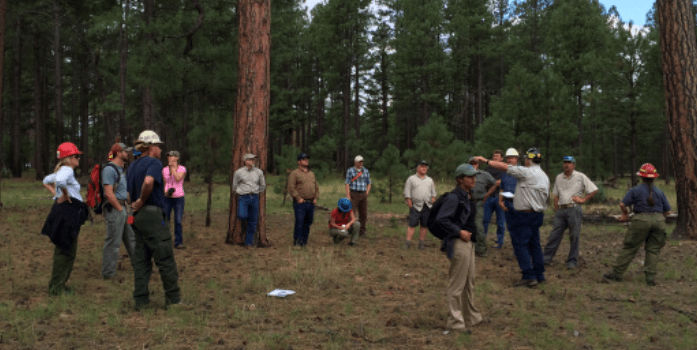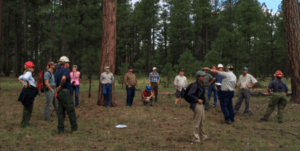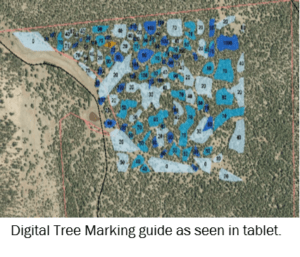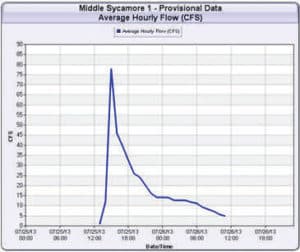

Finding Common Ground: 4FRI Collaborative Planning Takes to the Forest
The second large analysis, the Rim Country Environmental Impact Statement (EIS), picks up on a challenging aspect of planning that needed further collaboration and support from stakeholders after the first EIS—that of managing “stands with a preponderance of large, young trees” (SPLYTs). They’re not “old growth” yet, but they could be considered future old growth. The objectives are to retain and enhance some proportion of these areas to achieve structural diversity across the landscape and to maximize recruitment of old growth through the restoration process.
In early August, the Planning Work Group took to the field to discuss how to identify and analyze these stands. The result was an increased understanding of how digital imagery tools such as LiDAR can help determine which stands should be targeted for providing fire risk reduction while retaining future old growth characteristics at the same time. The Planning Work Group continues to evaluate this topic, as well as other aspects of the Rim Country EIS, and closely coordinates with the U.S. Forest Service (USFS) and the 4FRI Stakeholder Group.
Finding Common Ground: 4FRI Collaborative Planning Takes to the Forest
Finding Common Ground: 4FRI Collaborative Planning Takes to the Forest The second large analysis, the Rim Country Environmental Impact Statement (EIS), picks up on a challenging aspect of planning that needed further collaboration and support from stakeholders after the first EIS—that of managing “stands with a preponderance of large, young trees” (SPLYTs). They’re not “old […]
A View From the Inside: In the Field with Mixed Conifers
A View From the Inside: In the Field with Mixed Conifers On June 8, the U.S. Forest Service and the Ecological Restoration Institute (ERI) invited 4FRI Stakeholders into the field on the Black Mesa district of the Apache-Sitgreaves National Forest to initiate discussion and share perspectives on potential mixed conifer restoration treatments. A turnout of […]
Moving into the Digital Age: Tablet Technology & Trees
Moving into the Digital Age: Tablet Technology & Trees To reduce the time and cost associated with traditional paint-tree marking practices, forest managers in northern Arizona are testing different tree marking methods. In partnership with Arizona Department of Forestry and Fire Management, Coconino National Forest, and Perkins Timber Harvesting, The Nature Conservancy tested new technology […]
Across Our Forest: A Busy Weekend at Buck Springs
Across Our Forest: A Busy Weekend at Buck Springs July 2016 For several years now, the Arizona Elk Society (AES) has organized a volunteer work weekend near Buck Springs on the southern end of the Coconino National Forest (CNF). This year’s event was held June 11-12. Over 100 volunteers, mostly from AES and Friends of […]
A View From the Inside: SRP Flowtography™
Left: July 25, 2013 @ 14:50 – Right: July 25, 2013 @ 15:05 A View From the Inside: SRP Flowtography™ April, 2016 The Salt River Project (SRP) has recently pioneered an innovative and low-cost technology that gathers images of stream depth information. SRP Flowtography™ is a minimally invasive method of time-lapse photography equipped with event gages designed to […]
Four Forest Restoration Initiative – Copyright 2021. All rights reserved.




